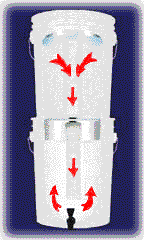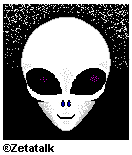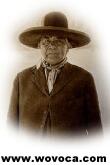|
||||||||||||||||||
Press CTRL+D to bookmark this page! |
||||||||||||||||||
 |
||||||||||||||||||
| Click here for
EarthMotherCrying Wallpaper |
||||||||||||||||||
The Rwandan Massacres |
||||||||||||||||||
|
||||||||||||||||||
|
||||||||||||||||||
|
|
||||||||||||||||||
|
||||||||||||||||||
|
||||||||||||||||||
|
||||||||||||||||||
|
||||||||||||||||||
The Rwandan Massacres
BackgroundThe massacre of Tutsis by Hutus in Rwanda and Burundi has its genesis in the colonial past. Germans had first colonized the area in the nineteenth century. It was then conquered by Belgians, who controlled Rwanda from World War I until 1962. Both the Germans and the Belgians backed the Tutsi minority over the Hutu majority. The Hutus overthrew the Tutsi-led government in 1966, after a seven-year civil war. In that war, between 20,000 and 100,000 Tutsis were killed and 150,000 were driven into exile. These exiles formed the RPF (Rwandanese Patriotic Front) under former defense minister Yoweri Museveni and invaded Rwanda from Uganda in 1990. The Hutus, fearing the return of Tutsi rule, began the wholesale massacre of Tutsis. Although the violence has been reported as ethnic of tribal in nature, the Hutu and Tutsi share a common language and history. In fact, the characteristics, the class divisions, and even the names used to separate Hutu from Tutsi are the creation of the white colonists. When they arrived in Rwanda, the Germans and Belgians found a feudal society based on the division of cattle ownership (Tutsis) and farming (Hutu), divisions that the two groups had accepted as the status quo. They even share a common religion, Catholicism, although many of the massacres took place in churches where great numbers of people had sought sanctuary. The massacre began on April 6, 1994, after a plane carrying the president of Rwanda, Juvenal Habyarimana, and the president of Burundi, Cyprien Ntaryamira, was shot down. Both presidents were Hutus. Hutu nationalist fanatics in Rwanda spread hysteria, using radio broadcasts to exhort Hutus to "fill the half-empty graves." Conservative estimates of the violence put the death toll at more than 500,000, with more than 2 million refugees out of a total population of 8 million. While the American and European nations wrung their hands (and did nothing), dozens of countries, among them most of the former Soviet republics, rushed to provide both sides with weapons at bargain prices. To intensify the tribal nature of the violence and, it is thought, to conserve expensive ammunition, much of the killing was done with machetes, leaving thousands of corpses of people who had been hacked to death. The radio broadcasts made a point of saying that all infants and children must be killed. Before his death, Habyarimana, fearing a coup, had organized the Interahamwe (those who kill as one), a fanatically nationalistic Hutu militia, to carry out his orders. At the same time, under pressure from Western aid donors, Habyarimana was force to negotiate with the RPF and allow a transitional government to be formed. Secretly, however, he and Theoneste Bagorosa, the head of the army, had already begun to unleash the terror of the Interahamwe. The chronology of events and the efficiency with which the administrative infrastructure carried out the massacres both indicate that the massacres were planned and executed by a small group close to the president. Hours after Habyarimana’s death, the horror began.
The KillingUsing a special code of markings that had been created during a "census" undertaken in February 1994, and the "ethnic" identity cards introduced by the Belgians, the militia began the killing, turning the capital of Kigali into a grid of death. Lists of people to be killed were circulated, targeting all born of Tutsi fathers, regardless of whether their mothers were Hutus. Individual Hutus were also marked for death, including the supporters of democracy, opposition politicians, and those involved in the human-rights movement. The 500,000 Tutsi deaths occurred in the space of only ten weeks, turning the whole country into a wasteland of devastation. Early intervention by the United Nations could have saved the thousands of Tutsis who had huddled in churches, schools, and stadiums, where they were killed. Belgian and French paratroopers were sent in only to evacuate all foreigners who wished to leave. Very few Rwandans were evacuated, not even those who had worked for UN agencies, embassies, or nongovernmental organizations. Intervention did not take place largely because the United States, still shaken by events in Somalia, refused to commit to action in a region of no strategic interest. Only the French sent troops, although the French acted largely out of their own strategic and economic interests, and they did nothing to stop the root causes of the killing. While the Interahamwe were trying to kill every Tutsi in Rwanda, the RPF was winning the war, and soon the Hutus joined the Tutsis on the road to exile. The instigators of the massacres survived the war and soon took over the refugee camps and commandeered the humanitarian aid, stockpiling the provisions for a counterrevolution. Soon thousands more, both Hutu and Tutsi, were dying of dysentery and cholera, diseases that do not discriminate among their victims.
The AftermathWhile the RPF government includes Hutus and claims it has no interest in reprisals, many refugees remain too afraid to return. The deployment of human-rights workers and the efficient and equitable distribution of humanitarian aid are needed to facilitate a climate of return. The United Nations, however, is stalled on the issue of what constitutes genocide and whether to hold war-crimes trials. The situation in Rwanda is a grisly addendum to the history of European involvement in Africa. The vacuum left by the end of the Cold War has been filled with corruption, greed, and violence. From: "The 20th Century" by David Wallechinsky
Further Resources
The
Rwanda Crisis: History of a Genocide
Season
of Blood: A Rwandan Journey
Rwanda
and Genocide in the Twentieth Century
Kill
Thy Neighbor
We
Wish to Inform You That
Return to more Hidden and Suppressed History.
|
||||||||||||||||||
|
||||||||||||||||||
Shapeshift to WOVOCA! to view this site's main page |
||||||||||||||||||
|
||||||||||||||||||
|
||||||||||||||||||
|
||||||||||||||||||
|
||||||||||||||||||
|
||||||||||||||||||










![[Image]](pict41.jpg)
![[Image]](pict43.jpg)